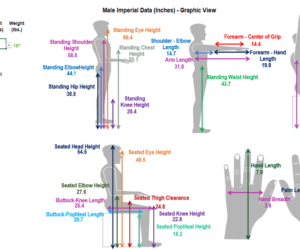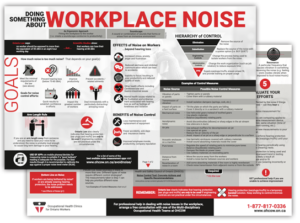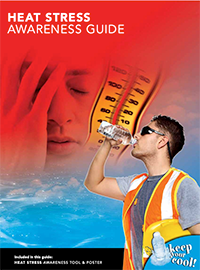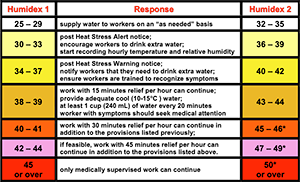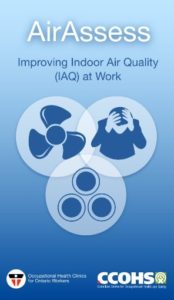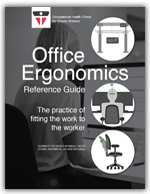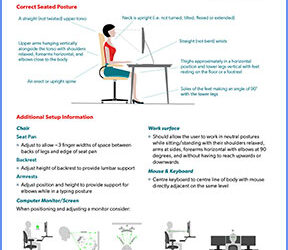Prevention programs are a proactive way to find and fix workplace hazards before workers are injured or become ill. These programs can be effective at reducing injuries, illnesses, and fatalities. Musculoskeletal Disorders, Work Environment and Workplace Ergonomics are all key topics of the prevention picture.
Ergonomics/ Injury Prevention

PREVENTION
By definition, ergonomics is the study of the relationship between workers and their work environment.
The aim of ergonomics is to match the job to the worker to reduce the strain placed on the tissues and to prevent injury.
We provide information and resources on both office ergonomics and industrial/commercial ergonomics
MUSCULOSKELETAL DISORDERS
When a muscle, tendon, nerve or joint is stressed and traumatized on a repeated basis for days, months or years, those body tissues eventually become damaged. This leads to a work-related musculoskeletal disorder (MSD).
Musculoskeletal disorders (MSDs) are the most common type of workplace injury in Ontario workplaces. They can occur throughout the body including the head, neck and back as well as in the upper and lower extremities. It is crucial to control the hazards that could leads to MSDs.
Apps & Tools
Here is a selection of our most popular apps and tools for Ergonomics and Injury Prevention. For our full selection, see our Apps Tools and Calculator page.
OHCOW TOOL
Office Ergonomic Calculator
The Office Ergonomics Calculator was designed to highlight areas of improvement between you and your workstation. Ensuring the proper height of your chair and workstation equipment is important in improving comfort and potentially reducing the risk of injury.
OHCOW TOOL
Job Demands Analysis Spreadsheet
This Job Demands Analysis (JDA) includes both a Physical Demands Description (PDD), as well as an analysis of Cognitive and Psychosocial Demands (CDA). It is best used on a mobile device such as a phone or tablet.
OHCOW TOOL
Rapid Upper Limb Assessment (RULA) Tool
A workplace risk assessment tool that evaluates the exposure of workers to ergonomic risk factors associated with upper extremity musculoskeletal disorders.
OHCOW TOOL
Anthropomorphic Calculator
OHCOW's Excel-based Anthropometric Calculator brings together a number anthropometric databases* in an attempt to provide the most comprehensive and concise data set of anthropometric dimensions.
INJURY PREVENTION: WORK ENVIRONMENT
The environment in which your work can adversely affect your health and well-being.
Work Environment
From noise to temperature and lighting, it is important that all aspects of your work environment are suitable for the tasks that are being performed as well as the people that are performing them.
A safe and healthy work environment is good for your workers as well as your business as it improves job satisfaction, productivity and reduces costs related to absenteeism, turnover, workers’ compensation, and medical claims. Learn more about the importance, benefits and how to improve your work environment using the following topic-specific resources:
NOISE
We all experience sound and noise in our daily life, normally at a safe level that does not damage our hearing. However, sound can be extremely harmful when at too high a frequency and when experienced over a long period. Learn more about the types of noise, noise limits and the effects of prolonged exposure to high levels of noise with our wide range of resources. Learn more about NIHL on our Noise-induced Hearing Loss page.
Noise-Induced Hearing Loss (NIHL) Audiogram Calculator
Updated August 2021
Designed to assess values based on the worker’s audiogram to clarify if their NIHL meets the minimum requirement for establishing a NIHL claim with the Ontario Workplace Safety and Insurance Board (WSIB).
Noise – Its Effects and Methods to Reduce Exposure
October 21, 2014
A PDF slide presentation Presented by:
James Miuccio, MSc, CIH
Occupational Hygienist
LIGHTING
Proper lighting in your work space is essential to both your health and safety. Insufficient or improper lighting can cause eye strain leading to headaches, even migraines.
It can also cause accidents due to poor visibility. Use the following resources to learn more about the importance of workplace lighting:
Office Ergonomics – Lighting
A section of our Office Ergonomics Reference Guide is devoted to the topic of lighting including the various types of lighting, dealing with glare, work surfaces, etc.
Office Ergonomics – An application standard for workplace ergonomics*
Canadian Standards Association (CSA) Z412-17
The objective of this Standard is to apply ergonomics to enhance user health, safety, and well-being and to optimize system performance in order to prevent occupational injuries and illnesses or to reduce the severity of harm related to occupational activities in offices.
Hazards / Ergonomics / Lighting – A Resource Listing*
Canadian Centre for Occupational Health and Safety (CCOHS)
A listing of resources including Factsheets, e-Courses, Posters and Podcasts, all related to workplace lighting.
TEMPERATURE
Heat / Cold
Workers are often employed in environments, both inside and outside, which may involve exposure to both cold and hot temperatures. Understanding the health risks involved with working in extreme temperatures can help employers protect their workers. From heat stress and sun stroke to hypothermia and snow shovelling, we cover a wide range of health effects with valuable resources. Learn more on our Working in Heat/Cold Extremes page.
Are You Ready for Winter?
Working in the Cold: Ergonomics and Snow Removal
A presentation that provides information on working in the cold including thermoregulation, acute and chronic health effects, hypothermia and prevention controls. It also provides ergonomic information related to snow shoveling including preparing yourself for the task, picking the right shovel, snow weight and use of a snowblower.
Cold Stress Calculator
An Excel-based tool created as a simple means for determining what precautions should be taken to protect workers from cold stress-related adverse health outcomes.
INDOOR AIR QUALITY (IAQ)
"Sick Building Syndrome"
Indoor Air Quality is an important component of your work environment. Poor indoor air quality can lead to headaches, fatigue, eye, nose, throat and skin irritations as well as the spread of colds and the flu. It can also be responsible for Building-Related Illnesses (BRI) such as Legionnaires's Disease, Pontiac Fever, Aspergillosis, SARS, Tuberculosis, Rubeolla. Use the following resources to learn more about the causes, effects, and prevention of Sick Building Syndrome by improving indoor air quality using the following resources:
OHCOW GUIDEBOOK
Office Ergonomics Reference Guide
This guidebook explains the practice of fitting the work to the worker with diagrams and instructions. Updated for the modern workplace, remote (mobile) workstations, and new technology.
OHCOW TOOL
Office Ergonomic Calculator
Enter your workstation and your body measurements, and answer a couple of related questions. The calculator will then determine whether your equipment is currently set up optimally.
OHCOW INFOSHEET
Quick Workstation Setup Guide
Those with desk jobs spend a lot of time sitting and using repetitive motions, which can all lead to musculoskeletal injury. Listen to a related podcast on office setup on our OH-PODS podcast channel.
OHCOW TOOL
Keyboard Shortcut Tutorial
Minimize mouse use, increase keyboard efficiency, and reduce ergonomic risk using keyboard shortcuts.



